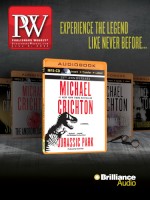The recently concluded BookExpo America featured a plethora of events for booksellers, including an address by outgoing American Booksellers Association president Steve Bercu and a well-attended panel on how booksellers can best use social media.
Bercu, CEO of BookPeople in Austin, Tex., had been on the ABA board for eight years, a period that spanned from the Great Recession though the current indie bookstore revival. “We have gone through tumultuous times and moved to better times,” Bercu said at the ABA annual meeting at BEA last month.
Bercu credited ABA CEO Oren Teicher’s move to institute annual meetings with publishers as an important factor that has helped make for a stronger working relationship. Of all the changes that publishers have put in place, the one that has had the biggest impact on margins and the bottom line for his store, Bercu said, is rapid replenishment. Though Random House has offered rapid replenishment for a long time, now Penguin, through the RH merger, is doing so. And over the holidays a number of houses also provided quick inventory replacement. “[Rapid replenishment] will be mandatory for publishers, hopefully,” Bercu said.
Simplified co-op, which saves booksellers time and money, is also high on Bercu’s list of ways publishers aid booksellers, as is extended dating. Bercu said that though consignment “didn’t work out great for some publishers,” he sees extended dating of 150 or 180 days as offering many of the advantages of consignment.
Small Business Saturday and publisher discounts to support it have also improved booksellers’ bottom line. “I can guarantee that American Express wouldn’t have done [Small Business Saturday] if we weren’t hammering our communities about shopping local,” Bercu said. “We’ve positioned ourselves in the middle of this thing, the way no other industry has. It’s something we’ve benefitted from.”
The social media panel featured representatives from four indies—BookPeople, Literati, Parnassus Books, and Tattered Cover—who have led the way in integrating social media into their stores’ business models. The panelists agreed that while using social media to promote the store and engage with the community in a fun and irreverent way is valuable, finding the right balance is of supreme importance, as what is posted online reflects upon the store.
Mike Gustafson, who opened Literati in Ann Arbor, Mich., two years ago, emphasized that the best way for a “business that sells stories is to reach customers through storytelling.” Gustafson said he uses social media to tell stories about the store and its staff as a way for the community to become familiar with both. He mixes comments about store news and events with
personal anecdotes, such as one about his wife and store co-owner being commended by the police for preventing a mugging that almost took place outside Literati. “I wanted people to know that she might be a bookseller by day, but she’s a badass crime-fighting ninja by night,” he joked.
Gustafson also uses social media to engage his customers. “People love to see creativity run amuck,” he said, explaining that he posts notes that are left by customers typing on the vintage typewriter inside the store and photos of customers wearing store apparel in exotic places.
The Tattered Cover uses social media to promote the 550 events it does annually. Heather Duncan, director of marketing, noted it’s important to engage actively with the customer, and the store works hard to intersperse things its staff finds interesting with event promotions meant to pull people into the store.
Laura Philpott, who maintains social media for Nashville’s Parnassus Books, noted that since Parnassus started aggressively using social media to reach customers, online sales were 9% higher in 2014 than in 2013, including a 16% increase during the holiday season.



 Volume 262
Issue 23
06/08/2015
Volume 262
Issue 23
06/08/2015





